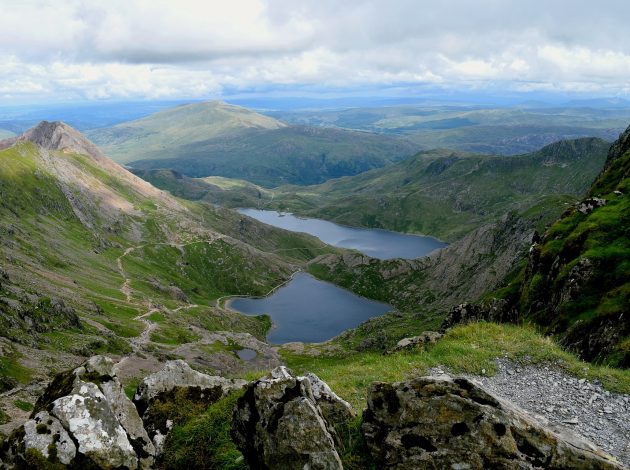The 47th Earth Day takes place on Saturday and this year the Earth Day Network launched a goal to achieve global environmental literacy by 2020. Part of this goal is to empower the public with knowledge to act in defence of environmental protection.
The concept of natural capital and the need to keep track of it through natural capital accounts, are building momentum in the UK and these accounts could provide useful support to the Earth Day Network’s goal to empower with knowledge.
Natural capital is simply the natural wealth of the UK, for example woodland, mountains or natural coastal areas. Natural capital accounts aim to monitor the changes to these natural assets and the benefits we get from them overtime and to record their value.
This blog explains a bit more about nature capital and why ONS and Defra are together developing natural capital accounts.
What are the Natural Capital Accounts?
When you think about the benefits you receive from nature you may think about fresh, clean air and a spectacular view, whereas others may think about food, fuel an water. Then again others may see nature as a source of inspiration for art, or as a means of protection from floods and the removal of carbon from the atmosphere.
All of these benefits come from services provided by natural assets, from woodland in the highlands to lakes in the lowlands. However, the values of natural assets are predominantly hidden, partial or missing from the nation’s balance sheet as we often receive these benefits for free.
What this means is when it comes to making an important decision, such as a policy decision, the economic impacts are difficult to compare with the environmental impacts. In the same way the national accounts bring together a wealth of information to provide a complete picture of our economy, the natural capital accounts aim to provide this for our environment.
The accounts record the size and condition of our natural assets, and the physical and monetary values of the services provided to us by nature. For example, they tell us there are 3.2 million hectares of woodland in the UK and this woodland removed 16.5 million tonnes of carbon dioxide in 2015, which was valued at £1 billion – using this carbon price.
The accounts enable us to monitor the services we receive from our natural assets and track changes to them over time. Our slideshare summarises some of the changes we have found so far.
How do Natural Capital Accounts differ from other environmental statistics?
Lots of environmental statistics exist and ONS and Defra both publish a wide range outside of the natural capital accounts. Well known statistics include the amount of waste which is recycled and greenhouse gas emissions.
The natural capital accounts would not include these as they are a result of human activity, instead the natural capital accounts focus on the size and conditions of the UK’s natural assets and the benefits we receive each day.
For example, the amount of greenhouse gases removed by the UK’s natural assets, such as woodland, would be recorded in natural capital accounts, rather than the amount of greenhouse gas emitted by human activity.
Why do we need to value nature?
Many different types of well established economic statistics help us understand how well our economy is performing and help us make decisions. The environment has a big impact on the economy and our well-being, yet environmental and economic statistics are far removed from each other and often speak completely different languages.
A lot of what the environment provides us with is free, so its value can get underestimated or ignored. The natural capital accounts aim to include these values and account for them systematically.
For example, a patch of woodland will provide many services, such as recreational space, inspiration, timber, it will remove carbon and air pollutants from the atmosphere and help to manage water flows. The physical amount of pollution and carbon removed, the number of trips being made each year and the amount of timber harvested in this patch of woodland would all be included in the accounts. Using appropriate prices, these amounts can be converted into monetary units.
Money is a language and it is signal of value. By converting the services we receive from nature into monetary values, completely different services can be compare, be weighed up against costs and more informed decisions can be made.
Valuing the services nature provides can be done in a number of ways. Some values can be taken from the market, for example the timber and fish have established market prices. Service that are not traded, such as carbon and pollution removal, are trickier, but the government’s carbon price can be used for carbon removal and government estimates of health damage costs can be used for pollution removal. For free trips to woodland, we can take the amount paid to travel there as a proxy for how much someone would be willing to pay to be there.
How developed are the accounts?
As described, there are many aspects to the environment and many things to account for and value. At the moment we only have partial UK accounts, but the ONS and Defra are working to develop these further so we have a complete picture of our environment that will really help us make informed decisions about our natural assets.
We plan to have the accounts developed and fully functioning by 2020, by coincidence, nicely tying in with the Earth Day Network’s 2020 goal to achieve environmental literacy and empower with knowledge.
For more information about ONS and Defra work on measuring natural capital, please click here.
Emily Connors is a Project Manager for ONS
